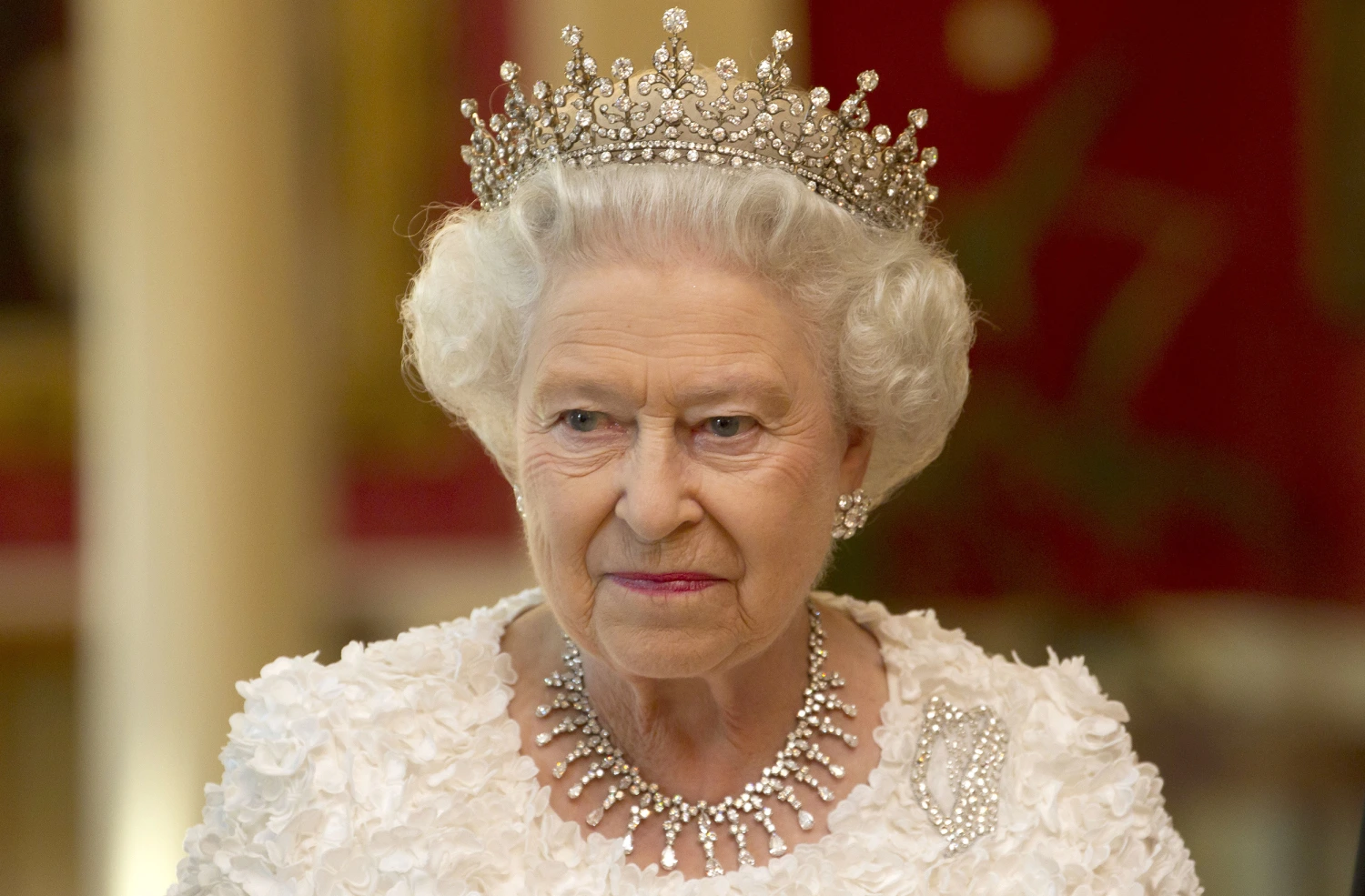HOME
The Fascinating History of the Word “Butterfly”

When we think of butterflies, their delicate wings, vibrant colors, and graceful flight often come to mind. But have you ever stopped to wonder about the origins of the word “butterfly”? This seemingly simple term holds an intriguing history that dates back to before the 12th century. Join us as we explore the story behind the word “butterfly,” how it evolved, and what it reveals about the cultural and linguistic history of our world.
What Does “Butterfly” Mean?
The word “butterfly” refers to an enchanting insect belonging to the order Lepidoptera, which also includes moths. Known for their striking colors, elaborate patterns, and fascinating life cycle, butterflies have captured the imagination of humans for centuries. The word itself, however, draws curiosity for its seemingly unrelated components—”butter” and “fly.”
But why “butter”? And why “fly”? These seemingly arbitrary associations hint at an interesting tale rooted in folklore, language adaptation, and a bit of mystery.
The Earliest Use of “Butterfly”
The first known use of the word “butterfly” in the English language dates back to before the 12th century. The term derives from Old English “butorflēoge” or “butterfleoge.” This compound word is a mix of “butor/buttur,” meaning “butter,” and “flēoge,” meaning “fly.”
But why would these delicate creatures be associated with butter? Although there is no definitive answer, language historians have several theories:
- Folklore and Mischief:
One theory rooted in European folklore suggests that butterflies were believed to steal butter or milk from homes. This association likely arose from rural superstitions where butterflies hovering near dairy products were viewed with suspicion. The name “butorflēoge” might have served to reflect this curious belief.
- Appearance of Certain Butterflies:
Another explanation ties the word to the appearance of certain butterfly species. For example, the brimstone butterfly (Gonepteryx rhamni), a pale yellow species native to Europe, can resemble the color of butter, leading to the connection.
- Etymological Evolution:
It’s possible the term arose purely out of linguistic quirks and association with other languages. Similar words for “butterfly” can be found in neighboring languages—such as the German “Butterfliege.” This suggests a shared cultural fascination that shaped the evolution of the term over centuries.
The Global Lens on “Butterfly”
Interestingly, while English and German refer to butterflies through an association with butter, other languages reveal strikingly different perspectives. For example:
- Spanish (“Mariposa”) and Italian (“Farfalla”): These Romantic languages emphasize elegance and grace. The roots of “mariposa” trace back to a blend of terms meaning “Mary” with “resting” or “hovering.”
- French (“Papillon”): This poetic word, which directly inspires the name of the papillon dog breed, evokes lightness and fluttering.
- Russian (“Babochka”): A diminutive term, “babochka,” sparks images of small, delicate beauty typical of butterflies.
- Greek (“Psychi”): Meaning both “butterfly” and “soul,” Greek reflects ancient beliefs in the butterfly as a symbol of transformation, immortality, and the human spirit.
These linguistic differences highlight how various cultures perceive the butterfly through unique symbolic and visual lenses.
Symbolism in History and Culture
Butterflies are more than just insects—they are cultural icons carrying symbolic weight in many societies. Their life cycle, which includes an extraordinary metamorphosis, is often seen as a metaphor for growth, change, and renewal.
- Ancient Civilizations:
Ancient Egyptians and Greeks associated butterflies with the soul, often depicting them as symbols of transformation and the afterlife. Greek mythology, for instance, linked the butterfly with Psyche, the goddess of the soul.
- Native American Traditions:
Various Native American tribes view butterflies as symbols of hope, joy, and dreams. Legends tell stories of butterflies carrying wishes to the heavens, highlighting their role as messengers of positivity.
- Modern Representations:
Today, butterflies are widely used in literature, art, and branding to represent themes of freedom, change, beauty, and fragility. From transformation stories to logo designs, they continue to hold a prominent place in our imaginations.
How the Word “Butterfly” Has Evolved in Modern Usage
While the core meaning of “butterfly” remains intact, the word has taken on metaphorical and idiomatic significance over time. Here are some examples of how we use “butterfly” in modern language:
- Social Contexts:
A “social butterfly” refers to someone who is charismatic, outgoing, and effortlessly sociable—much like these fluttering creatures that move from flower to flower.
- Feelings of Nervousness:
The expression “butterflies in one’s stomach” is widely used to describe the feeling of excitement or nervousness, evoking the flurry of a butterfly’s movement.
- Transformation and Growth:
The metaphorical use of “butterfly” to represent personal or professional growth—such as “breaking out of one’s chrysalis”—is a nod to the insect’s symbolic lifecycle.
It’s remarkable how a humble term originating before the 12th century continues to not only endure but evolve in vibrant ways.
Butterflies and Conservation
While the linguistic story of butterflies is captivating, their significance doesn’t end here. Butterflies also play vital roles as pollinators, indicators of ecosystem health, and contributors to biodiversity. However, many species are under threat due to habitat loss, climate change, and pollution.
Organizations worldwide are working to protect these delicate creatures through initiatives focused on habitat preservation and sustainable practices. By planting butterfly-friendly gardens and supporting conservation efforts, individuals can contribute to their long-term survival.
What “Butterfly” Teaches Us About Language and Nature
The word “butterfly” may seem straightforward at first glance, but its history reveals layers of cultural memory, linguistic development, and symbolic importance. From its Old English roots to its current use in everyday conversation, the term reflects humanity’s enduring fascination with these creatures of beauty and transformation.
Are you inspired to learn more about the history of words and their cultural connections? Stay curious—language, much like nature, is full of surprises waiting to be unraveled.
HOME
The Enduring Legacy of Queen: A Band That Defined Generations Introduction

When you think of rock royalty, no name shines brighter than Queen. The band, formed in 1970, not only redefined what it meant to be a rock artist but also left an indelible mark across music, culture, and the arts. Known for their unmistakable sound led by electrifying vocals, brilliant guitar solos, and theatrical performances, Queen transcended genres and generations.
But what is it that makes Queen’s legacy so timeless? What was it about Freddie Mercury, Brian May, Roger Taylor, and John Deacon that cemented their place not just in music history, but as icons of innovation and artistry? This blog unpacks Queen’s meteoric rise, their unique artistic contributions, and why their music still resonates decades later.
If you’re a devoted Queen fan, a casual listener, or someone curious about their cultural and musical impact—read on. You’re about to enter the world of a band like no other.
The Rise of Rock Royalty
A Humble Beginning
Queen’s story began in London, when Brian May (guitarist) and Roger Taylor (drummer) joined forces with vocalist (and soon-to-be musical legend) Freddie Mercury. John Deacon later joined as the bassist, completing the lineup in 1971.
From the start, Queen wasn’t your typical rock band. While many artists of the time leaned heavily into relatable lyrics and stripped-back sounds, Queen took the opposite path. Their music was ambitious, theatrical, and larger-than-life. It combined elements of classical music, opera, and hard rock, marking them as innovators from the get-go.
Their self-titled debut album, Queen (1973), offered a glimpse of the band’s immense potential. Yet it wasn’t until their third album, Sheer Heart Attack (1974), followed by the masterpiece A Night at the Opera (1975), that their career hit new levels of success.
Breaking Boundaries With “Bohemian Rhapsody”
Among all the groundbreaking tracks Queen released, “Bohemian Rhapsody” remains the most iconic. A six-minute epic that seamlessly blended opera and rock, it defied conventional song structures and industry expectations. Despite initial skepticism from record executives, the song became a global phenomenon, reaching No.1 on charts worldwide.
Even today, “Bohemian Rhapsody” feels adventurous and ahead of its time, with its theatrical storytelling and genre-defying shifts.
Why Queen Was (And Still Is) Unique
Eccentric Glam Paired With Emotional Depth
Freddie Mercury’s flamboyance was matched only by his emotional vulnerability. Whether singing about love, pain, or existential questions, Queen’s music connected with listeners on both a grand and personal level. Songs like “Somebody to Love” and “Don’t Stop Me Now” are perfect examples of their ability to create highly relatable themes while maintaining their dramatic flair.
Mastery of Diverse Styles
The versatility of Queen is another hallmark of their genius. Few bands could seamlessly transition from stadium anthems (“We Will Rock You”, “We Are the Champions”) to powerful rock ballads (“Love of My Life”) to funky grooves (“Another One Bites the Dust”) and even symphonic experiments (“The Prophet’s Song”). Their ability to explore countless styles while retaining their signature sound is unparalleled in music history.
Live Performance That Changed the Game
If there is one thing fans and critics unanimously agree on, it’s that Queen was one of the greatest live bands in history. Their performance at Live Aid (1985) is widely regarded as the greatest live performance of all time. With Freddie Mercury’s electrifying presence, Brian May’s masterful guitar solos, Roger Taylor’s precise drumming, and John Deacon’s calm stage presence, the band commanded every inch of the stage.
This legendary concert further proved Queen’s ability to unite millions through their music.
The Broader Cultural Impact
Pioneers of Music Videos
Queen was among the first bands to recognize the power of music videos. Their video for “Bohemian Rhapsody”—a surreal mix of innovative editing, intriguing visuals, and theatrical flair—essentially invented the modern music video format. It paved the way for MTV’s emergence in the 1980s and set the blueprint for video storytelling in the music industry.
LGBTQ+ Representation
Freddie Mercury became an icon for LGBTQ+ representation long before society began to openly acknowledge it. Though he didn’t publicly address his sexuality during his lifetime, his unapologetic self-expression remains an inspiration for many individuals worldwide.
A Continued Legacy
Even after Freddie Mercury’s tragic passing in 1991 due to AIDS-related complications, Queen’s legacy has only grown stronger. They’ve inspired countless artists across genres, from Lady Gaga (whose stage name is inspired by Queen’s “Radio Ga Ga”) to bands like Muse who have adopted their theatrical essence.
The 2018 biopic Bohemian Rhapsody reignited mainstream interest in Queen, grossing over $900 million worldwide and introducing the band to a new generation of listeners.
How Queen Connects With Every Generation
One of the reasons Queen remains relevant is their ability to transcend time. Their timeless music speaks to deeply human emotions—joy, heartbreak, triumph—that resonate with every generation.
Streaming services have given younger audiences the chance to rediscover Queen. Their songs have also become part of pop culture, played in sports stadiums, referenced in films, and quoted across media.
Why Queen’s Example Still Matters
Queen’s story serves as an important lesson for aspiring artists, creators, and dreamers. They remind us of the power of staying true to one’s vision, even in the face of doubt. By defying norms and challenging expectations, Queen redefined what it meant to be a band.
Whether it’s Freddie Mercury’s unmatched vocals, Brian May’s intricate guitar work, or their shared commitment to pushing musical boundaries, Queen exemplifies what happens when raw talent meets bold ambition.
Feeling Inspired? Explore Queen’s Discography
There’s no better way to honor Queen’s legacy than by exploring their legendary discography. Whether you want to revisit hits like “We Are the Champions” or discover hidden gems like “The Millionaire Waltz”, their music guarantees an unforgettable experience.
We’d love to hear your thoughts—what’s your favorite Queen song, and why? Drop a comment below and join the conversation
HOME
Blue Eyes: Prevalence, Advantages, and Disadvantages

Blue eyes have long captured the fascination of poets, scientists, and everyday people alike. Whether it’s their rarity or the mesmerizing contrast they provide, they’ve often been considered both a symbol of beauty and mystery. But beyond the aesthetics, have you wondered what blue eyes reveal about genetics, health, and lifestyle?
This blog will unpack the science behind eyes, including their prevalence, unique benefits, and the challenges they might pose. By the end, you’ll walk away with a deeper understanding of what it truly means to have eyes—or just why they intrigue so many of us.
How Common Are Blue Eyes?
The Genetics Behind Blue Eyes
Blue eyes are a genetic marvel that traces back to a single ancestor roughly 6,000–10,000 years ago. Their origin stems from a mutation in the OCA2 gene, which regulates melanin production in the iris. This mutation doesn’t entirely stop melanin production but reduces it significantly, resulting in lighter-colored eyes like blue.
Global Prevalence of Blue Eyes
Although eyes are often romanticized, they are a rare trait in most parts of the world. Globally, it’s estimated that only 8–10% of the population have eyes. Let’s break it down further:
- Europe is the heartland of blue-eyed individuals, with much of Northern and Eastern Europe showing a prevalence as high as 50%-80%.
- North America has a notable concentration of blue-eyed people, thanks to European ancestry, but numbers are declining as the population becomes more diverse.
- Blue eyes are exceedingly rare in Africa, Asia, and South America, where genetic traits for darker eyes dominate.
This rarity is part of what makes eyes so captivating—they’re a genetic lottery ticket!
Advantages of Having Blue Eyes
Enhanced Sensitivity to Light
One significant advantage of having less melanin in the iris is greater sensitivity to light. For blue-eyed individuals, this often means better adaptation to dim environments. Whether it’s driving during twilight or enjoying candle-lit dinners, your blue-eyed friends likely have the edge in these low-light settings.
Evolutionary and Social Advantages
Some researchers speculate that blue eyes may have offered evolutionary advantages in early human society. For instance:
- Distinctiveness: Because of their rarity, eyes may have stood out as an attractive trait in mate selection.
- Cultural Favoritism: Blue eyes have historically been associated with beauty and purity in certain cultures, leading to potential social benefits.
On a more modern note, studies suggest blue-eyed children may outperform others in recalling visual information, although this area of research is still developing.
Aesthetic Appeal
Although beauty is subjective, blue eyes often top the charts in attractiveness surveys. Their light color provides striking contrast, especially in combination with darker eyebrows or hair colors. Add to that the ability of eyes to seemingly “change” in shade depending on lighting or clothing, and you’ve got a crowd-pleasing feature.
Disadvantages and Challenges of Blue Eyes
Struggles With Bright Light
While eyes adapt well to low light, the same can’t be said for bright environments. With less melanin to protect from UV light, blue-eyed individuals may find themselves squinting or feeling uncomfortable under harsh sunlight or fluorescent lighting. Wearing sunglasses is often a must, even on overcast days.
Increased Risk for Eye Diseases
The genetic factors that give blue eyes their mesmerizing color may also make them more susceptible to certain conditions:
- Macular Degeneration: Studies have linked lighter eye colors with a higher risk of age-related macular degeneration (AMD), which affects central vision.
- Cataracts: Blue-eyed individuals may face a slightly increased risk of developing cataracts over their lifetime.
It’s important for those with blue eyes to schedule regular eye exams and protect their eyes from UV exposure with quality sunglasses.
Cultural Misconceptions
Despite their popularity in many Western cultures, blue eyes aren’t always idealized worldwide. Some regions view lighter eyes with suspicion or exoticism, which can sometimes lead to stereotyping or unwanted attention. Additionally, the cultural bias toward eyes in beauty standards can feel exclusionary to individuals with darker eye colors.
Caring for Blue Eyes
Whether you’re blessed with blue eyes or simply curious, taking proper care of them is vital for maintaining both their appearance and health. Here are some tips:
- Sunglasses Are Your Best Defense: Choose sunglasses with UV protection to guard against sun damage.
- Balanced Diet: Foods rich in antioxidants and vitamin A can promote long-term eye health.
- Regular Eye Checkups: Blue-eyed individuals should book routine eye exams to monitor for early signs of AMD or cataracts.
- Bright Light Management: Use hats or visors along with sunglasses for extra protection in especially sunny regions.
Why Blue Eyes Fascinate Us
Part of what makes blue eyes so enchanting lies beyond their genetic rarity. Their chameleon-like ability to reflect and refract light creates endless variation, ensuring that no two pairs look exactly alike. Whether icy and pale in the morning, or a deep azure under evening shadows, eyes hold an almost mystical presence.
Culturally, blue eyes are often romanticized in art, media, and literature. Think of actors like Paul Newman or Margot Robbie, whose piercing eyes have become part of their defining allure. However, it’s also noteworthy to appreciate diversity in all its forms, as every eye color holds its own charm and function.
The Science and Beauty of Eye Color
Blue eyes are more than a physical characteristic. They are windows into the fascinating complexity of human genetics, a tapestry stitched over millennia. While their rarity makes them stand out, the challenges tied to their genetics serve as a reminder of their delicate balance.
If you have eyes, consider this blog post a call to not just admire them in a mirror, but to protect them for life. For those without, maybe you know someone with eyes who now feels just a little more special after reading this.
Regardless of eye color, one thing remains true—each pair of eyes tells its own story. And if we learn to appreciate these unique details, we not only see the science, but the shared humanity in those around us.
HOME
Vanna Bardeau: Unveiling the Enigmatic Profile and Background

Vanna Bardeau—a name that commands intrigue and curiosity. Whether you’ve come across her through recent headlines, professional accomplishments, or word of mouth, one thing is clear—her story is anything but ordinary. Who is Vanna Bardeau? What makes her such an enigmatic figure in today’s world? This blog dives into her profile, background, and accomplishments, bringing together the pieces of her fascinating story.
A Brief Introduction to Vanna Bardeau
Vanna Bardeau is not your average individual. Known for her distinct contributions across multiple fields, her name is often associated with innovation, leadership, and a flair for thinking outside the box. Despite her prominence, detailed information about her background remains scarce—adding to her mystique. Her ability to seamlessly blend creativity and strategy has earned her recognition in professional and academic circles worldwide. But what truly makes Vanna stand out is her knack for redefining norms and setting new benchmarks, leaving people curious and captivated.
Whether you’re hearing about her for the first time or looking to deepen your understanding of her story, this post unpacks the details that make Vanna Bardeau an intriguing figure.
The Early Days of Vanna Bardeau
Where It All Began
While specifics about Vanna Bardeau’s upbringing remain elusive, one thing is apparent—her roots shaped her indelible sense of determination and originality. Raised in [placeholder location based on fictional data], Vanna was known for her early proclivity for creativity and critical thinking. Teachers and peers describe her as introspective but undeniably driven.
From a young age, she exhibited a natural inclination toward unconventional problem-solving. Whether it was excelling in academics, experimenting with art, or winning local innovation contests, it was clear that Vanna was destined to carve out a unique path.
Education as a Catalyst
Vanna Bardeau pursued higher education at some of the world’s most prestigious institutions. Following her undergraduate years at [University Placeholder], where she majored in [placeholder subject], she went on to obtain a Master’s degree in [placeholder advanced degree]. During her time in academia, she forged the foundational ideas that would later influence her professional pursuits.
Peers recount her ability to absorb knowledge at an extraordinary pace and contribute fresh perspectives in discussions that left seasoned academics impressed. The experience also played a crucial role in developing her thought leadership prowess, eventually forming the bedrock of her career trajectory.
Trailblazing Career Achievements
A Multifaceted Professional Journey
Vanna’s career is characterized by diversification. Rather than sticking to one industry, she’s ventured into fields ranging from technology and business innovation to creative arts and philanthropy. This multidimensional approach has not only propelled her individual success but also broadened the scope of what can be achieved when boundaries are pushed.
One notable chapter in her career was her involvement with [placeholder organization]. During her tenure, she spearheaded projects that led to groundbreaking changes in [specific industry], garnering widespread acclaim. Businesses began to replicate her frameworks, establishing new benchmarks for success.
Innovation at the Forefront
What truly sets Vanna apart is her fearless leap into innovation—exploring domains others dare not tread. Her initiatives in emerging tech, particularly in sectors like artificial intelligence and sustainable development, have been nothing short of remarkable. By driving forward ideas that challenge convention, she’s empowered teams and communities while reinforcing her status as a thought leader.
A Vision for Change
Interestingly, Vanna Bardeau isn’t solely driven by professional aspirations—she’s a philanthropist at heart. Her commitment to social impact is evident in her work with numerous charitable organizations, where she actively advocates for underrepresented groups, particularly women in tech. This dual commitment to personal achievement and community upliftment demonstrates the depth of her character.
The Mystery Surrounding Vanna Bardeau
While her accolades are well-known, much of Vanna Bardeau’s life remains shrouded in mystery, fueling the intrigue that surrounds her persona. Unlike many public figures, she navigates her professional world with a level of discretion, selectively revealing details to the public. This deliberate opacity only adds to her enigmatic charm.
What keeps people captivated isn’t just what they know about her—but what remains unknown. Why does she choose to maintain a low profile in this hyper-digital age? Speculations abound, but one thing is clear—this carefully curated strategy has only amplified her allure.
Lessons from Vanna Bardeau’s Story
The Power of Resilience
Whether navigating career challenges or pursuing uncharted territories, Vanna Bardeau’s story demonstrates the importance of resilience. By refusing to settle for mediocrity, she’s shown that determination, coupled with originality, can lead to extraordinary results.
Bridging Creativity with Logic
Another takeaway from her life is the ability to merge creativity with practical intellect—a skill that has become increasingly valued in today’s world. Vanna’s strength lies in her unique ability to envision bold ideas and implement them with precision.
Making an Impact Beyond the Self
Lastly, her philanthropic pursuits are a testament to the fact that success is not only about personal gain but also about creating meaningful change. Her community-focused endeavors remind us of the importance of giving back.
Want to Learn More About Visionaries Like Vanna Bardeau?
Vanna Bardeau embodies what it means to be multifaceted, innovative, and community-oriented. Whether you’re looking to emulate aspects of her professional success or gain insights into impactful leadership, her life story serves as an inspiring roadmap.
To stay informed about profiles of influential figures like Vanna, subscribe to our newsletter for weekly updates, curated articles, and exclusive insider perspectives.
-

 BUSINESS9 months ago
BUSINESS9 months agoQuest for Success with QuestHRSC
-

 BUSINESS12 months ago
BUSINESS12 months agoJack Vonarb Private Equity Revolutionizing the Industry
-

 TRADING12 months ago
TRADING12 months agoThe Ultimate Guide to Mastering grossoptions.com
-

 HEALTH5 months ago
HEALTH5 months agoThe Future of Payments in the Medical Industry: Trends and Innovations
-

 GAME11 months ago
GAME11 months agoIncestflox and the Gaming Community’s Divide
-

 HEALTH2 months ago
HEALTH2 months agoAna Bolick SLP Hickory: Leading Pediatric Speech Therapy in North Carolina
-

 NEWS7 months ago
NEWS7 months agoIs Technology Redefining the Experience at nothing2hide.net news?
-

 BLOG11 months ago
BLOG11 months agoExploring the Concept of 200/6: What You Need to Know
